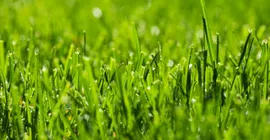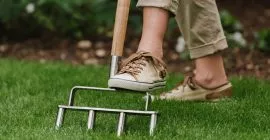With so many types of lawn feed available we thought we would help to answer the question of which lawn feed to use.
Our grass is constantly walked on, played on, and generally subjected to a lot of wear. So using the right lawn feed/fertiliser at exactly the right time will help replace lost nutrients as well as keep weeds and moss at bay. It will also help your lawn recover from winter.
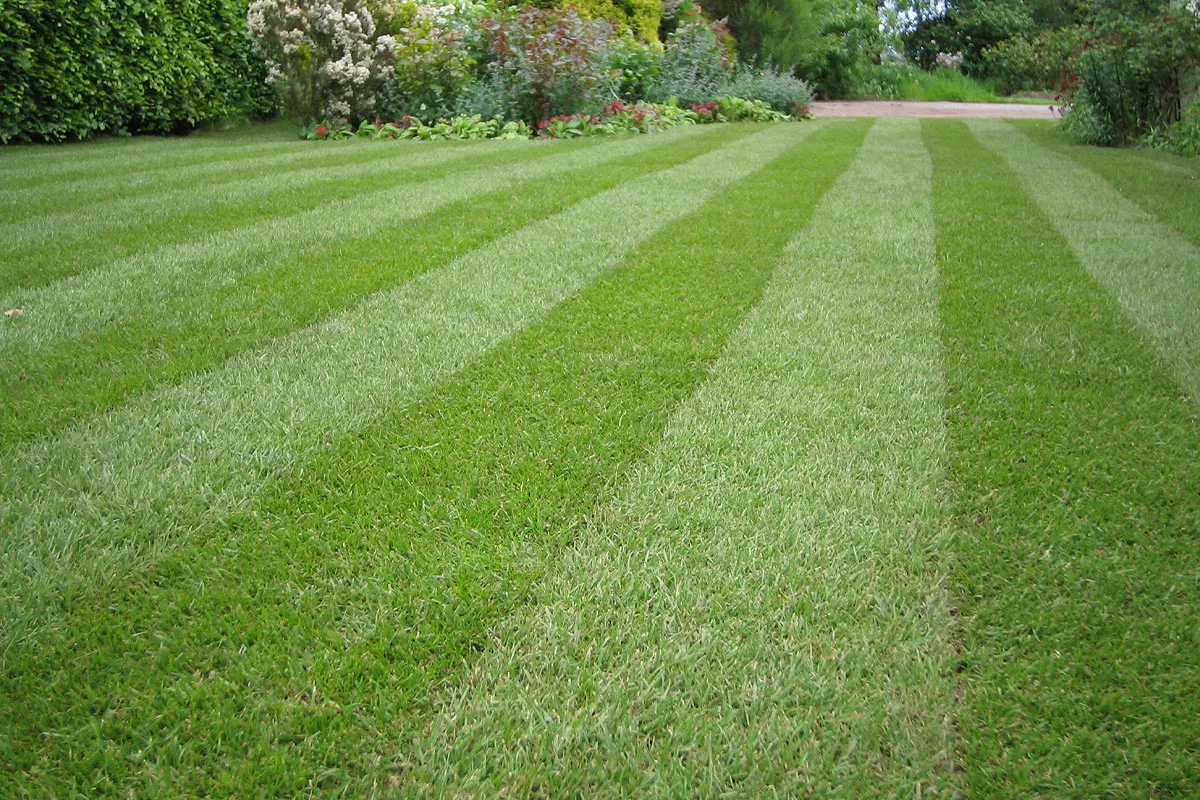
Which Lawn Feed is best for all Lawns?
The best type will change throughout the year. Therefore, it’s important to make feeding your lawn part of the seasonal process of caring for your lawn.
We recommend using a lawn spreader to ensure even coverage. Check out our lawn spreader settings here.
Lawn Feed for early Spring
Choose one with high Nitrogen levels as it will encourage new growth. Using Westland SafeLawn is ideal for this season. Use from February to September.
Lawn Feed for Spring and Summer
Usually with a higher nitrogen content to encourage leaf and shoot growth. It’s best to use this from March to September and it will steadily release nutrients over a 6-8 week period.
Either choosing Westland SafeLawn (Used from February to September) or Aftercut All In One is a good option for these months. Use during May to August. This all-in-one product, not only feeds but greens and controls weeds too.
During a drought:
Lawns will go dormant during extreme droughts, so it is best to wait until a rainfall before applying feed to your lawn as they work best when the lawn is actively growing.
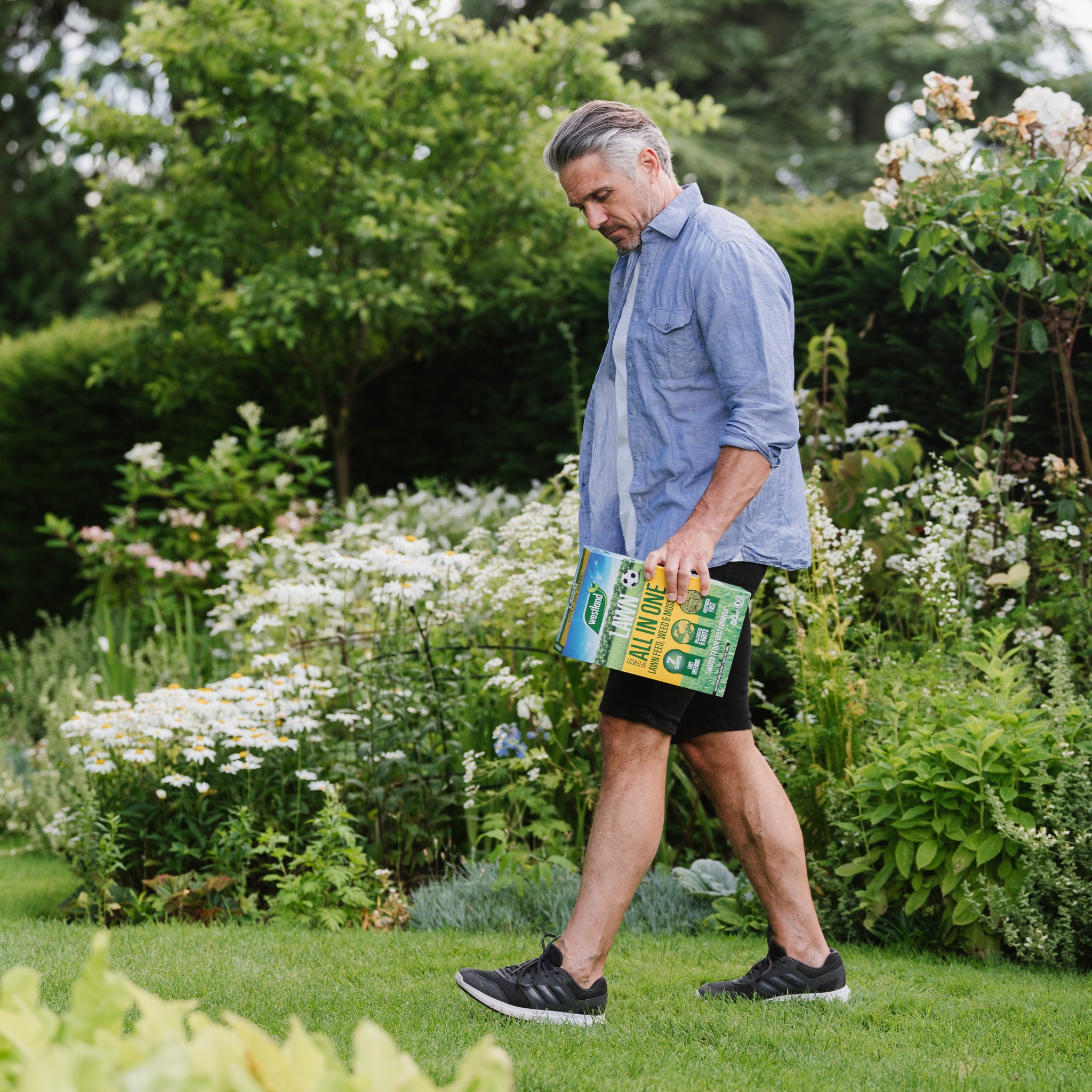
Feeding Lawns when you have Kids and Pets
If you have children or pets, or both, it’s important to consider child and pet friendly lawn care. To ensure an even coverage, we recommend using a lawn spreader. Our child and pet friendly range includes:
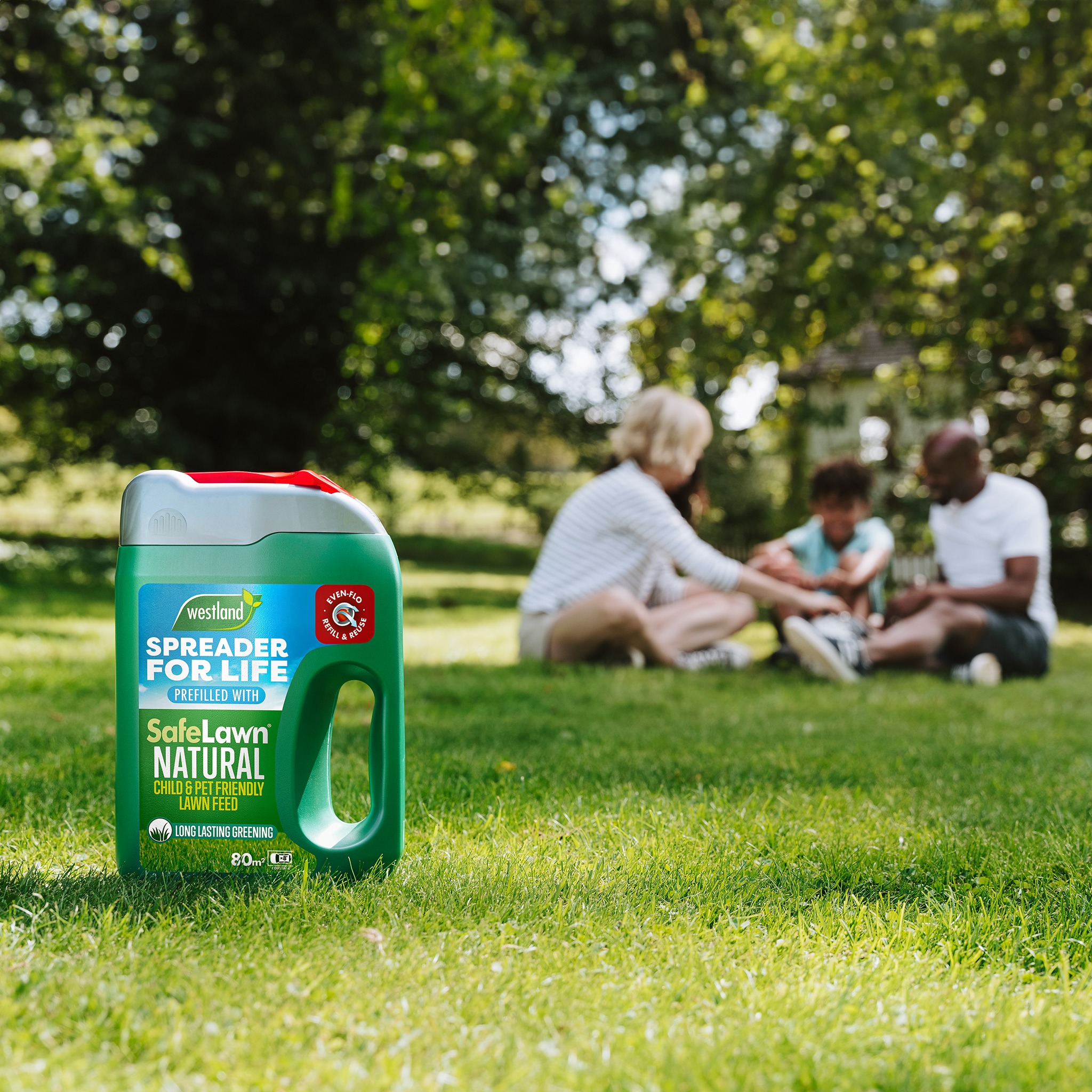
Should I use Liquid or Granular Lawn Feed?
Liquid fertilisers are fast-acting and can be applied with a watering can or sprayer. They are great for smaller lawns when you want quick results. However, they do not last as long as granular feeding, therefore more frequent applications are required.
Granular feeds are more convenient for applying to larger lawns and are available with different nutrient sources;
- Natural/organic based; naturally slow releasing fertiliser, generally lower nutrient levels and promotes a balanced growth with a little and often nutrient release
- Mineral fertiliser; quick-acting feed to promote a quick response and strong growth, can also be combined with weed and moss control active ingredients.
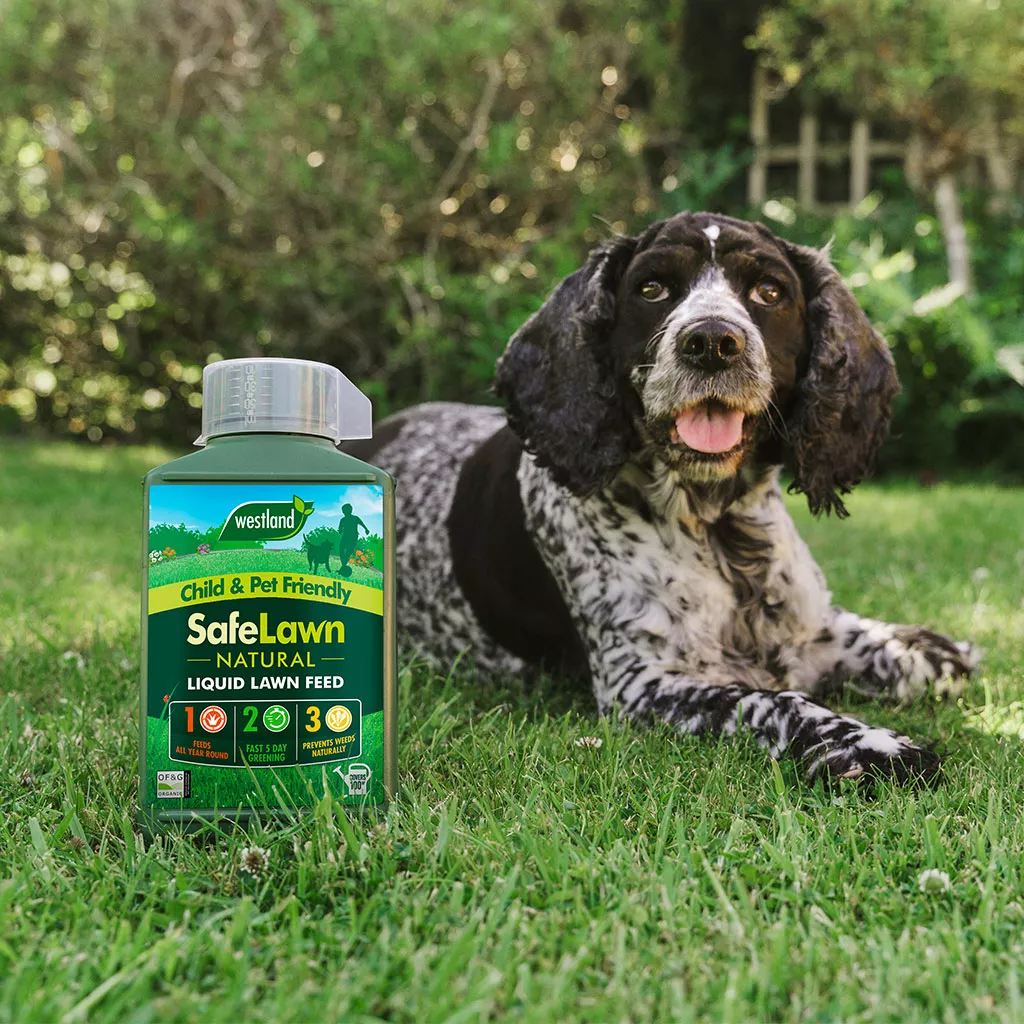
What do Lawn Feeds Contain?
Fertilisers contain 3 primary nutrients:
NPK:
(N) Nitrogen – An essential building block for new grass growth and essential for healthy green growth. If the grass is yellowing/pale in colour then this indicates low levels of Nitrogen and leads to poor grass quality.
(P) Phosphorous – Develops & encourages a strong grass root system which makes the lawn more resilient all year round and especially in dry weather.
(K) Potassium – For grass durability and better hydration of the grass. This helps the lawn deal with drought and disease much better and will deliver a stronger, healthier lawn.


